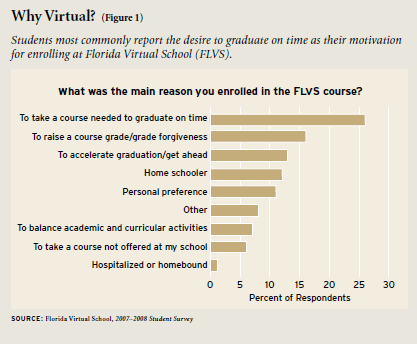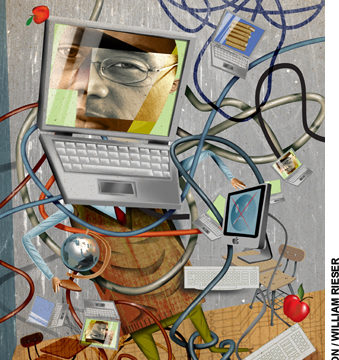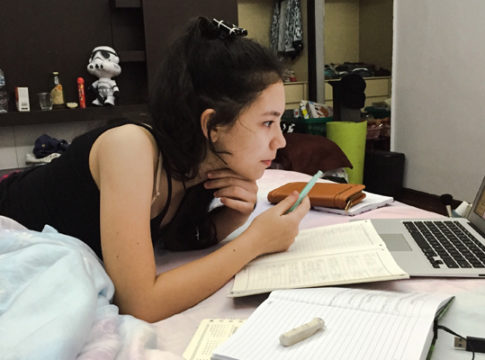As the visitor approaches the handsome new quarters of Florida Virtual School near Orlando’s Valencia Community College, nothing tells him that he is about to enter the nerve center of one of the state’s largest schools. The four-story, rectangular, well-windowed structure is devoid of markings save for the massive number 2145, presumably the structure’s address, not an estimate of the year virtual education is to be fully realized.
Walking out of the second-floor elevator, one enters a football-field-length waiting area with a single, if very substantial, desk visible down near where a virtual goal post would stand. As the day progresses, one moves from one capacious office to another, all decked out with large, well-appointed work stations and sizable meeting areas that enjoy the Sunshine State’s prized natural resource. Florida Virtual School is clearly doing very well (see “Florida’s Online Option,” <em”>features).
So well that the visitor is regularly informed that the furnishings have been donated and the school’s lease costs less than the rent once paid for cramped quarters within the Orange County school system.
Florida Virtual’s success is no accident. Its chief executive officer, Julie Young, has constructed an energetic, dedicated team who watch the clock no more closely than does the inner core of an entrepreneurial Internet start-up. The school’s mission is carefully crafted to fit in with—not fight with—that of Florida’s school districts. The school offers courses that are not available at district schools, or that do not fit well into a student’s schedule, or that a student has to take for a second time.
Florida Virtual also offers instruction to home schoolers. But it eschews any hint of social conservatism in favor of a progressive-style approach that frees students from the prison of the bell and clock. Students are even given a four-week grace period during which they can withdraw from a course without penalty.
Florida Virtual does not collect any state dollars if a student withdraws or does not earn at least a D. If that is not much of a standard, it beats the one Florida imposes on its district schools. They get their state per-pupil funding whether a student stays or drops out, passes or flunks.
Some competition between the virtual school and district schools persists. If a student takes two semesters’ worth of virtual courses, it costs the district one-sixth of the state’s per-pupil allocation. But Florida Virtual can save districts headaches by offering replacement courses if a district loses a physics teacher or can’t afford to offer an elective course. So the virtual school’s course enrollments have soared above the 150,000 mark.
One of the school’s most popular courses—physical education—is required of all high school students, but is one that some do not wish to pursue via the school locker room. The course emphasizes good health practices. Students report their health objectives, exercise and eating habits, and changes in pulse and weight. The course appears to have provided one student with the incentive to lose 80 pounds.
Every effort is made to make sure the academic work submitted is the student’s own. Students take tests throughout the course period, and they write essays and papers. These are electronically scanned to check and see if material was copied from another student paper or from something on the Internet. Teachers grade and give feedback on assignments, and they call students at least once a month, and much more frequently if distress signals are detected. An honor code is given heavy emphasis.
Only one barely perceptible fly can be found in the virtual ointment: As elsewhere in American education, but even more so when teacher and student are physically separated, it is not always easy to detect whether students have mastered the material. Apart from those in Advanced Placement or other courses subject to an external exam, only a small portion of the total, students take no proctored examinations. But without such exams, the teacher in the end must infer just how much is being learned. May both virtual and district schools learn how to surmount this challenge well before the year 2145.
— Paul E. Peterson





